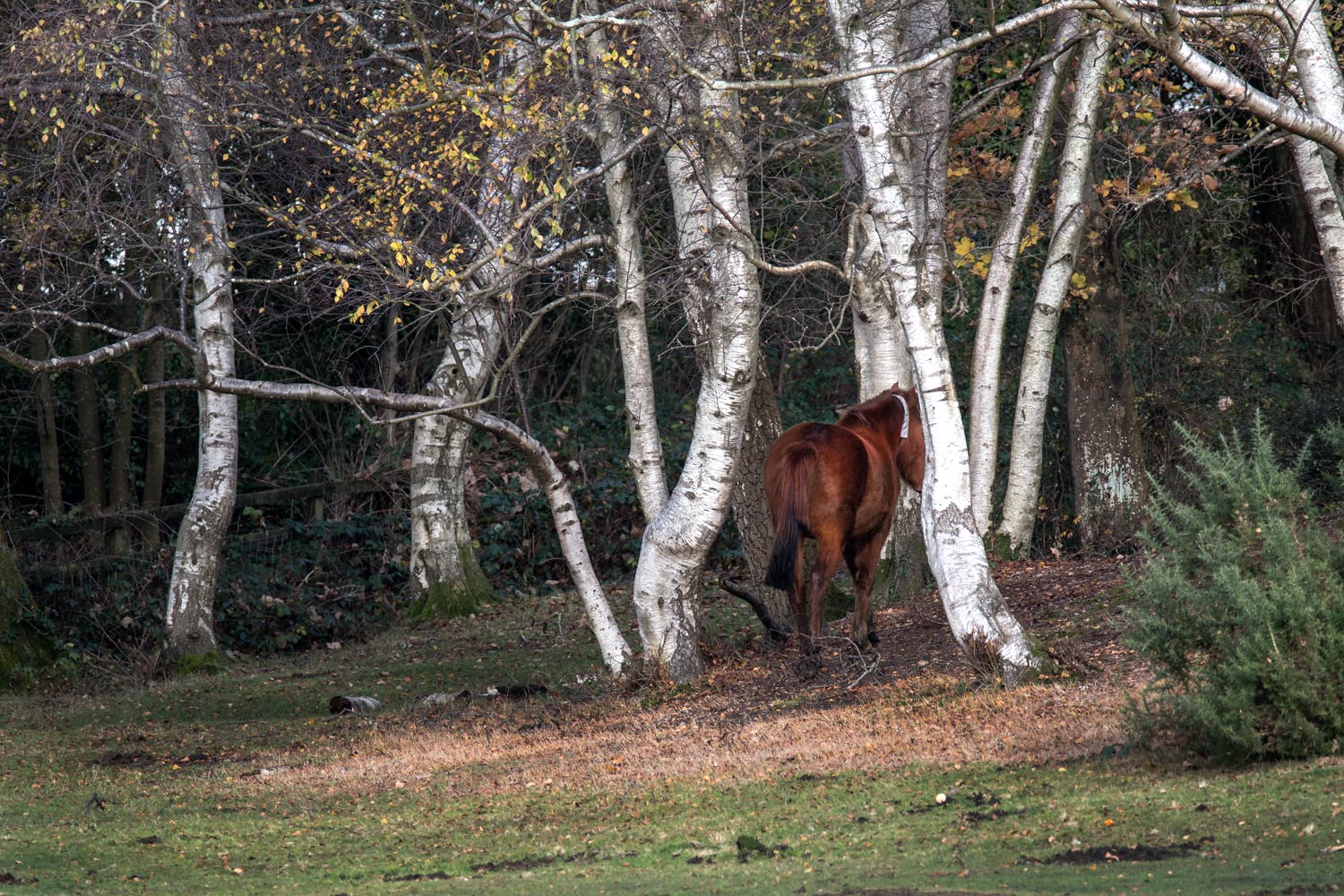

This is a follow-up to the post Why Does The Horse Hold Its Head Out Like That, about horses that hold their heads down and horses that hold their heads up. I found another photo of the horse in my stack of photos, and here it is. First there is the full frame of the horse going into the trees and then a close-up of the horse.
For those who followed my earlier post, you can clearly see the reflective neck band in the close-up photo here.
What is the angle of the head and neck of this horse relative to its body?
I would like to go back to the New Forest and spend time looking at the horses, noticing whether they generally hold their heads forward rather than up.
This thing of looking closely, paying attention, and noticing things – I have found this to be one of the big enjoyments in life.
To get back to my original question, did I observe an actual ‘feature’ about head angle between different breeds of horses?
Or was it just the way I happened to photograph the horses?
I asked on a forum and got some replies:
The term for this in the horse world is “head carriage” or “headset.” There are a lot of things that affect what position a horse’s head will be in at any given point in time: there certainly are breed tendencies in conformation to be “high headed” (e.g., Arabians, Friesians, or standardbreds) or “low headed” (quarterhorses, some draft horses, many pony breeds) and they are selectively bred for those traits. Breeds also vary in terms of their neck length, which can affect how high the head seems to be carried, even if the angle is the same. Training and exercise can either enhance or attempt to counteract the horse’s natural tendency. Finally, whatever the horse is doing or thinking in the moment someone captures an image will affect where their head is. (Kathryn Litherland, a horse rider from Knoxville, MD)
I also learned about cresty neck, a deposit of fat around the neck that may be indicative of an underlying disease, or may simply be that the horse is overweight.
Broken-Down Fence
You may have noticed a broken-down fence in the first photograph. I said in the previous post that the New Forest is unfenced (except where is meets major roads), and that is true. There are however also Commoners’ houses dotted about in the New Forest. That may be what the fence belongs to, I didn’t look in that direction at the time.
Or it may be that a particularly dense part of the forest has been fenced off because it is a danger to animals. Maybe next time when Tamara and I go, we will get a chance to look.
It’s called the New Forest, but there are big stretches of open ground as well, like here:

Excellent
LikeLike
What a lovely winter-fuzzy pony pic David!: )
Also couldn’t help but notice the amazing disappearing streamlet in this photo and thinking that it must have a lovely bit of falling-water sound there… Don’t suppose you were close enough to be able to hear it?; )
LikeLike
I don’t recall hearing it, but I remember thinking at the time that it looked like a fault in the ground.
LikeLiked by 1 person
Then again, it might just be an almost-drained, after rainfall puddle, mightn’t it?
LikeLike
I think it was a feature in the landscape, and as I said – I thought it was fault in the land.
LikeLiked by 1 person
Sorry, didn’t hear your answer come through. (Phone’s on Battery saver mode at the mo… ; )
LikeLike